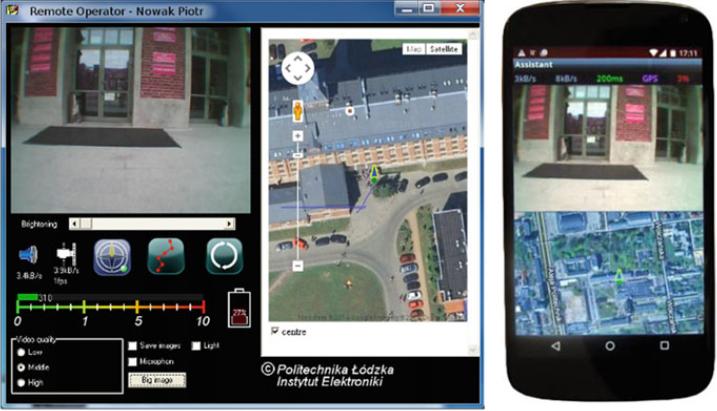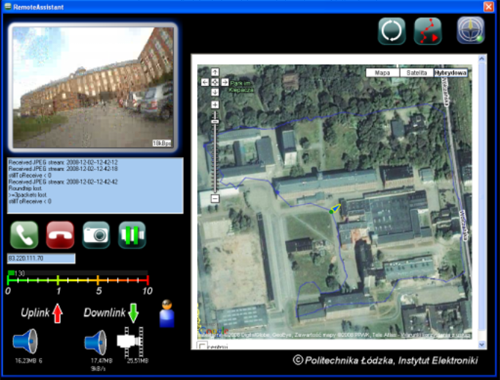Liczba osób niewidomych i słabowidzących na świecie jest estymowana na 314 milionów (z czego 45 milionów to osoby niewidome). Według raportów Unii Europejskiej na każde 1000 Europejczyków 4 osoby to niewidomi lub słabowidzący. Utrata wzroku to najpoważniejsza niepełnosprawność sensoryczna, która pozbawia człowieka ok. 90% informacji sensorycznej. Pomimo wieloletnich wysiłków badawczych nad elektronicznymi systemami wspomagania osób niewidomych w samodzielnym poruszaniu nadal nie opracowano rozwiązań, które spotkałyby się z powszechną akceptacja tej osób z niepełnosprawnością wzrokową. Biała laski (bez zamontowanej elektroniki) nadal pozostaje podstawową pomocą nawigacyjną niewidomego [1].
Electronic Travel Aids (ETA) is the general term encompassing a large class of assistive devices aiding the blind in mobility [2]. The following functional, rather than technological classification of these assistive devices can be defined: 1) obstacle detectors, 2) environment imagers, 3) orientation & navigation systems. The first two classes of aids are personal (wearable) devices of different technological complexity that scan the environment in from small (ultrasound detectors) to larger ranges (vision based systems). Whereas the third group of aids are systems that compute positioning information and can acquire data from larger scale distributed networks, e.g. sensor networks, digital maps or GPS. In the Institute of Electronics at Lodz University there is a long research record aimed at building ETA mainly as part of the "Naviton" and EU Horizon 2020 "Sound of Vision" project [3].
The key developments that have been achieved during recent years are the following:
- remote navigation module for the blind – a solution enabling a person located at a remote terminal (stationary or mobile) to guide visually impaired individuals by monitoring transmitted life images of the path in front of the blind traveller
- public transport information module – employing a server storing on-line information about location of public transport vehicles
- dedicated applications for smart phones equipped with speech synthesizer – serving as a navigation aid capable of informing the user of nearest points of interest (POIs) and routing pedestrian paths to indicated destinations
- vision based obstacle detection and navigation module – detecting and warning of the obstacles employing combined electronic technologies (stereovision, inertial sensors, electronic compass, GPS) and spatial audio technology enabling generation of acoustic “images” of the environment
- a network of radio beacons mounted in urban infrastructure – the network aids the visually impaired in more precise positioning in in-door areas and improves GPS positioning precision outdoors, e.g. locating public transport stops
- haptic interface – a device allowing to build haptic maps of the environment
- image sonification – technology applied in a mobile application for presenting graphical data by sounds
Institute of Electronics has also contributed to the success of the success of the Sound of Vision EU project, devoted to building personal navigation aid for the visually impaired
The ETA prototypes that we have built are still far from being ready solutions for guiding the visually impaired in real-world indoor or outdoor environments. We see these technologies rather as bases for virtual reality or real-world training environments. From our rich interactions with the visually impaired we conclude that that developing an adequate, user-centered scheme for training in efficient use of the ETA is of paramount importance. Our recent work can be accessed at [4].
- Prof. Paweł Strumiłło, e-mail: pawel.strumillo@p.lodz.pl
- Dr. Piotr Skulimowski, e-mail: piotr.skulimowski@p.lodz.pl
[1] Hersh M, Johnson M (2008) Assistive technology for visually impaired and blind people. Springer, London, doi: 10.1007/978-1-84628-867-8
[2] Strumillo P., "Electronic interfaces aiding the visually impaired in environmental access, mobility and navigation", 3rd International Conference on Human System Interaction, Rzeszow, 2010, pp. 17-24, doi: 10.1109/HSI.2010.5514595
[3] Strumillo P. et al. (2018) Different Approaches to Aiding Blind Persons in Mobility and Navigation in the "Naviton" and "Sound of Vision" Projects. In: Pissaloux E., Velazquez R. (eds) Mobility of Visually Impaired People. Springer, Cham, doi: 10.1007/978-3-319-54446-5_15
[4] Skulimowski, P., Owczarek, M., Radecki, A. et al. Interactive sonification of U-depth images in a navigation aid for the visually impaired. J Multimodal User Interfaces 13, 219–230 (2019), doi: 10.1007/s12193-018-0281-3

